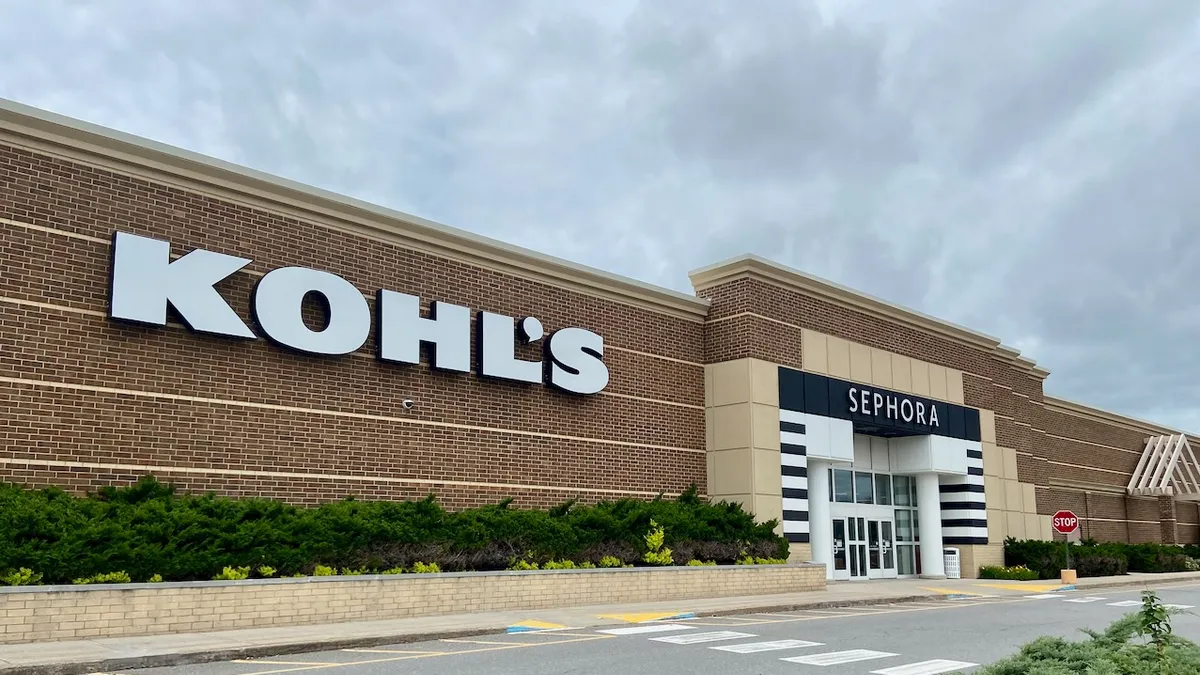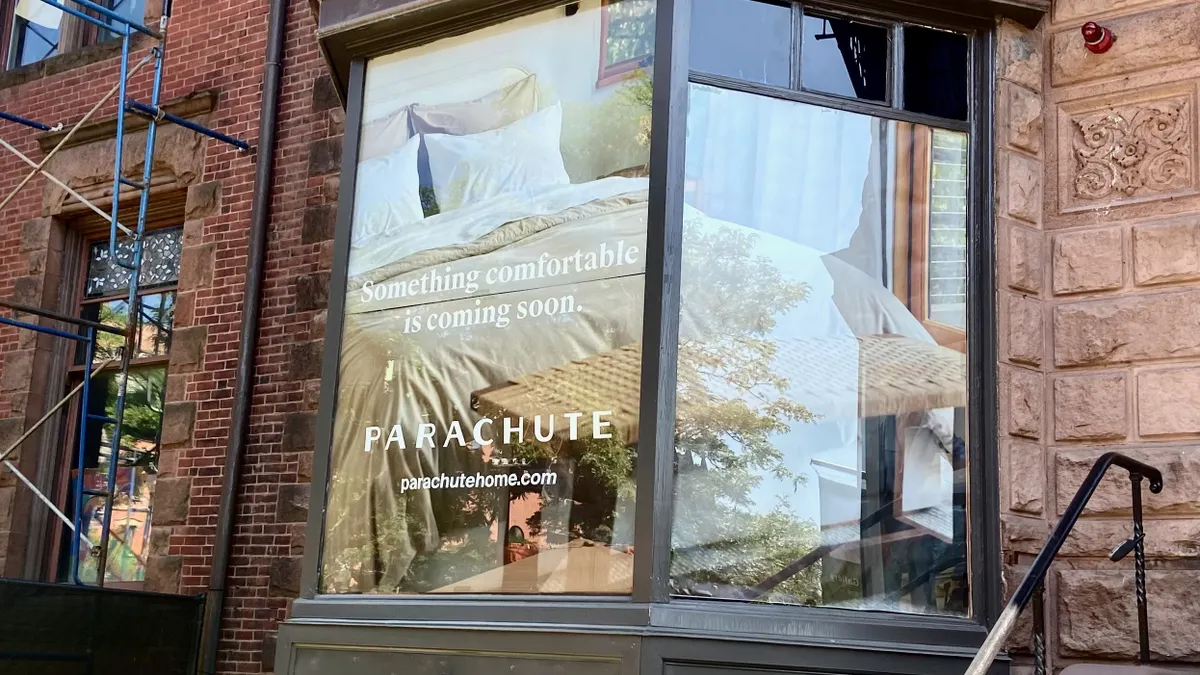Back-to-school shopping isn’t just a trip to the local mall anymore. The methods by which parents and their kids find back-to-school deals are changing, making mobile a key component to any successful shopping event.
Aside from mobile’s obvious use as a marketing and purchase platform, shoppers' relationship to mobile during back-to-school is shifting, down to the device's inclusion as a must-have item. "Though consumers will continue to make purchases on their mobile device, there becomes a point in time where every child needs (wants) a phone. Thus, purchasing a mobile phone will also become a part of the back to school shopping experience," Rich Kahn, CEO and co-founder of eZanga, told Retail Dive in an email.
And as Gen Z prepares to head to college, back-to-school shopping is trending toward young millennial parents and Gen Z students, making mobile and social media increasingly important.
Who’s using mobile
According to the NRF’s annual back-to-school survey, 43% of consumers plan to use their smartphones during back-to-school shopping — a 10% increase from five years ago.
Various studies have predicted even larger amounts of mobile engagement. One, by tech-based ad firm the Rubicon Project found that mobile will be used heavily amongst parents, with 60% of parents planning to use mobile devices for their start-of-year shopping and 30% planning to do at least a quarter of their back-to-school shopping on mobile.
Trey Courtney, global SVP and chief product officer at Mood Media, told Retail Dive in an email that he expects to see that number increase, with parents using their phones "to do everything from general product research to actually making certain purchases."
Courtney points to a larger trend: Mobile isn’t just another purchase platform for consumers. Many back-to-school shoppers are using their smartphones for other functions, such as comparing prices (58%), downloading digital coupons (39%), checking availability (38%) and taking pictures of items they’re considering purchasing (30%), according to data from the International Council of Shopping Centers’ annual back-to-school survey.
"They’re coming out with how they can leverage mobile and mobile experience to make things easier for the consumer and let’s face it — right now, [using a retailer’s mobile app] is not an easy situation for most people."

Luigi Ferguson
Assistant Vice President of SEO at Ansira
The widespread popularity and capabilities of mobile apps will be a key part of back-to-school for retailers looking to connect with consumers and "drive [traffic] in store," according to Luigi Ferguson, assistant vice president of SEO at Ansira.
"You have to consider that in America mobile is the critical device — we sleep with it, we take it to the bathroom," Ferguson said, "so by making sure you have a strategy that is optimized for mobile, you can become that preferred place where people shop and get their needs fulfilled."
Indeed some retailers are already doing that — Ferguson cites J.C. Penney’s new ‘Easier Back-to-School Shopping’ campaign as a good example of a company stressing the convenience and ease that mobile shopping can offer busy parents and back-to-school shoppers.
"Our app users are valuable customers, making three times as many trips to our store and purchasing 3.5 times more than non-app customers," J.C. Penney spokesperson Kate Coultas told Retail Dive in an email. "We’ve recently redesigned our mobile app with new features and the back-to-school season marks the first time we’ve launched a TV spot promoting our app along with an exciting new download offer. Through this new marketing we hope to build awareness of our app and increase downloads of our app, which will allow us to drive sales and build deeper relationships with our customers."
J.C. Penney isn’t the only retailer picking up the mobile-friendly mantle this back-to-school season. Analysts also expect Staples, the Container Store, Amazon, and big-box retailers like Target and Walmart to get in on the action.
"They’re coming out with how they can leverage mobile and mobile experience to make things easier for the consumer," Ferguson said of retailers attending to mobile strategy, "and let’s face it — right now, [using a retailer’s mobile app] is not an easy situation for most people."
Pitfalls of a back-to-school mobile strategy
A company’s decision to prioritize or neglect their mobile strategy during the back-to-school season could have serious effects, especially considering the recent success of retailers like Amazon, which this year doubled its mobile app usage on Prime Day and Sephora, which has been introducing more and more mobile uses to its customers.
While mobile shopping is becoming more popular across generations — consider that 20% of Walgreen's app users are 55 and older — millennials and Gen Z are still the most likely candidates for mobile use during back-to-school shopping. Both age groups find mobile and social media influential when making purchase decisions, according to a study by Yes Lifecycle Marketing emailed to Retail Dive, with 61% of millennials valuing mobile apps and 50% valuing social media, compared to Gen Z’s 56% and 42% respectively.
Retailers who slouch on mobile during back-to-school therefore face the threat of isolating those demographics — arguably the two most important age brackets for this year’s back-to-school season.
"It’s quite a turnoff when you’re interested in a product on a mobile app and then you click on it and the website is clunky or messy."

Gurjit Sandhu
Senior Marketing Specialist at Yes Lifecycle Marketing
One of the biggest pitfalls for retailers trying to expand their mobile presence is neglecting to make the entire path to purchase mobile-friendly, according to Senior Marketing Specialist Gurjit Sandhu at Yes Lifecycle Marketing.
"Brands should be taking advantage of all of the mobile platforms out there to make it as convenient as possible for mobile users to make a purchase because it’s quite a turnoff when you’re interested in a product on a mobile app and then you click on it and the website is clunky or messy," Sandhu says, explaining that it only takes a split second for a consumer to take their back-to-school search elsewhere.
Indeed, an e-commerce site that’s designed poorly can drive away 68% of consumers — add to that problem a retailer whose site works fine on desktop but isn’t optimized for mobile, and suddenly that merchant is losing customers that might have completed a purchase had they flipped open their laptop instead of their smartphone.
The pitfalls don’t end there, either. Even for customers who successfully download a retailer’s app, or reach a mobile-friendly version of a the website, basic functionality issues can have serious consequences. The majority of Gen Z (60%), the most mobile-friendly generation, will not use an app or website that is too slow to load and 62% won’t use an app that’s difficult to navigate, a study by ContentSquare found.
"With a mobile device, speed is the name of the game," Ferguson said. "Getting someone from the page they landed on through the checkout as quickly as possible is necessary. The longer a customer is on there, the more they start questioning: 'do I really want this product and if I do, do I have to get it from this site?'"
A song of social media and Google
A mobile-friendly path to purchase is really only half the battle for retailers looking to draw shoppers onto mobile platforms for the back-to-school season. The choice to use mobile opens up a Pandora’s box of options that, while beneficial, could also hurt retailers that don’t spend enough time learning how to optimize their strategy.
Social media is one of those largely-untapped categories. Over 80% of Gen Z is influenced by social media when making purchase decisions and the highest two of those influences are Snapchat and Instagram, according to Yes Lifecycle Marketing. Retailers looking to market to the younger generation need to have "a well-established presence across Instagram, Snapchat and Facebook," Sandhu said.
"It’s about making things visual and providing value added content. What appeals more to [consumers] is the personal connection, the human touch," Sandhu explains, suggesting that retailers should provide shoppers with inspiration for the back-to-school season as well as discounts and other information. "Having a narrative, having that story in terms of back-to-school I think would be very advantageous for retailers."
“More people are getting comfortable having their mobile devices guide their purchasing behavior."

Patrick Hopf
Co-founder and President of SourceKnowledge
In addition to social media, retailers would do well to consider how other mobile apps can help their back-to-school strategy. Google Posts, which Ferguson thinks will be a big help to retailers, is a new effort attached to the Google Maps platform that allows retailers to post something relevant to their store’s location so when customers find their store on Google Maps, they see the message along with it — this could be anything from a sales alert to a simple branding statement.
Furthermore, in-app mobile payment features have increased 57% since last year as customers seem increasingly willing to trust mobile with their sensitive information. This could open up opportunities for customers to find store-related content or coupons on different apps and thereby drive more traffic to the store.
"Apps like The Coupon App, DealNews and Shopkick are immensely popular,” Patrick Hopf, co-founder and president of SourceKnowledge, told Retail Dive in an email. “More people are getting comfortable having their mobile devices guide their purchasing behavior."
The payoff — or peril — of a back-to-school mobile marketing strategy
By and large, retailers have accepted the role that mobile is bound to play in any retail shopping holiday.
That being said, those who miss the boat on mobile during the back-to-school season could be setting themselves up for failure for the next major holiday too. Sandhu warns that while customers may be willing to forgive and forget brands who acknowledge and apologize for any mobile breakdowns, those who attempt to ignore their mobile shortcomings could negatively affect their customers’ long-term decisions.
"If you don’t have a good mobile strategy for back-to-school, you set yourself up for a really difficult holiday period."

Luigi Ferguson
Assistant Vice President of SEO at Ansira
"Every connection that you make, your customers remember that," Sandhu said. "And it’s going to affect their purchase behavior for the next season."
Back-to-school — if nothing else — is a powerful test-run for the holidays that follow and a retailer’s mobile performance during the season can be predictive of either their success or failure in retail holidays to come.
"There are many examples where retailers have not been able to connect with consumers and back-to-school is one of those make-or-break opportunities," Ferguson said. "If you don’t have a good mobile strategy for back-to-school, you set yourself up for a really difficult holiday period."





















